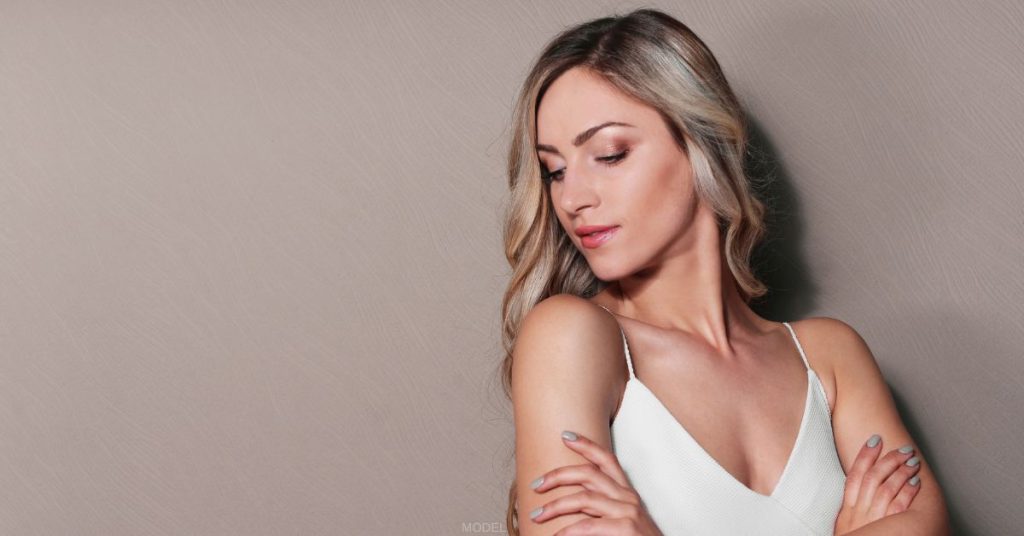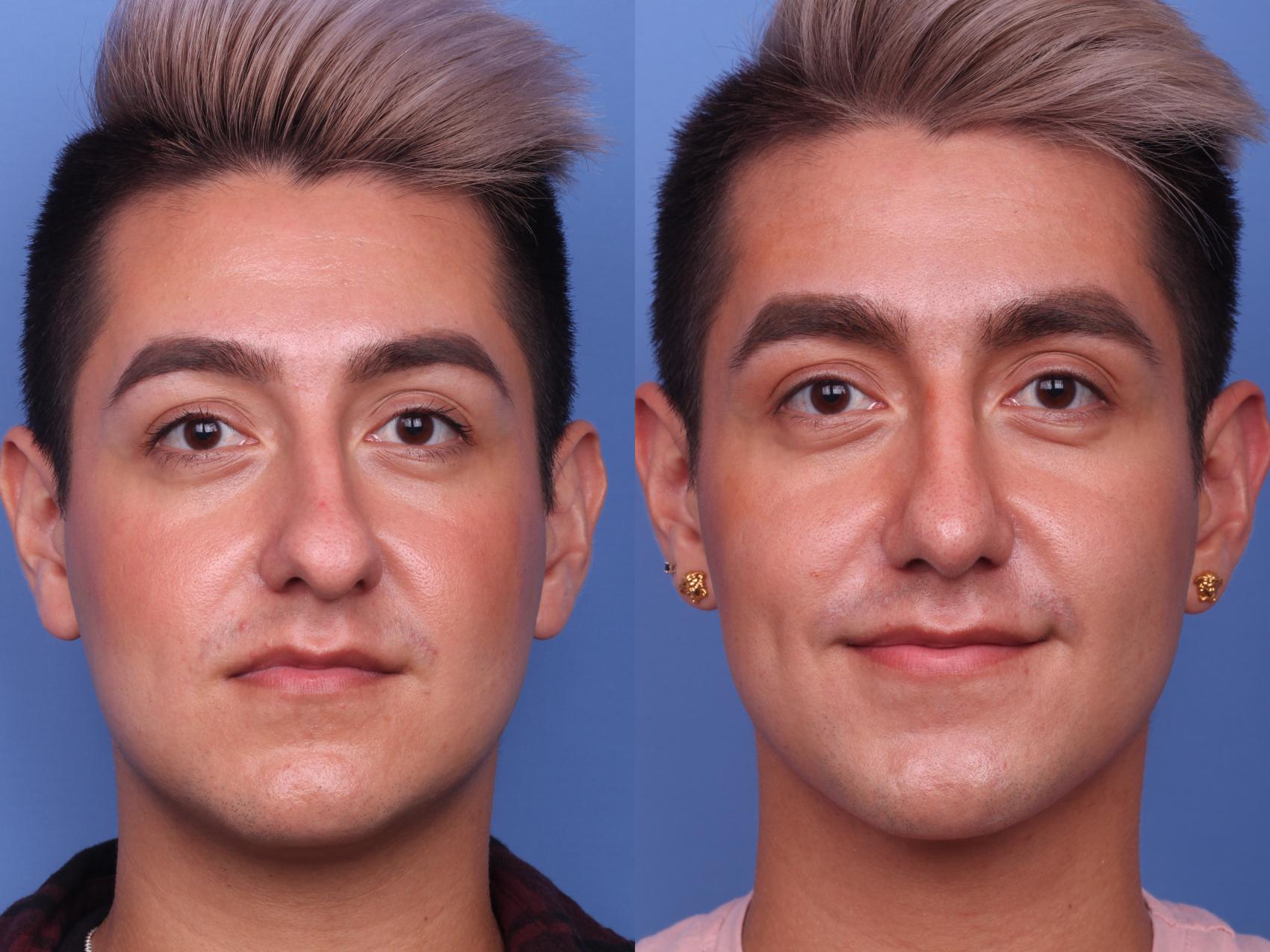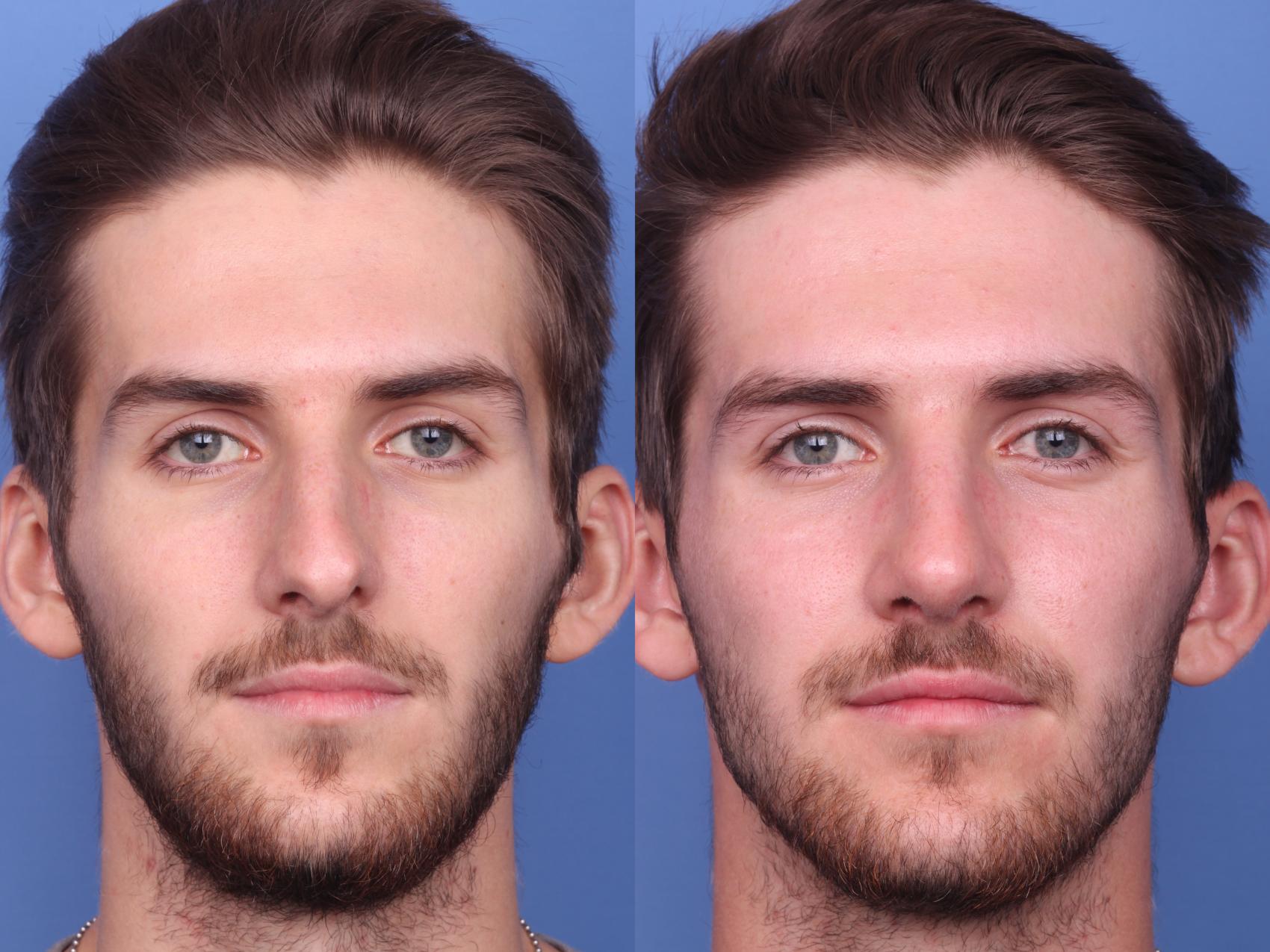Are you considering rhinoplasty surgery? Nose jobs are an excellent option for patients who want to reshape one of their most prominent facial features. But choosing to undergo an elective surgical procedure can be scary—especially when you think about the downtime involved. Knowing what to expect after surgery can help alleviate your anxiety or concerns and set you up for a smooth rhinoplasty recovery.
Keep reading to empower yourself with helpful details and tips about nose job recovery.
What Happens During Rhinoplasty Surgery?
As you likely already know, rhinoplasty improves one’s facial appearance by modifying the shape of the nose. We can enlarge or reduce the overall size, alter the shape of the tip, and narrow the span of overly wide nostrils. This reshaping may involve removing cartilage, which can require cartilage grafts. If the patient has a deviated septum, it can be straightened to improve breathing. Once the nose structure has been reshaped, we redrape the nasal skin and tissue, close incisions, and the healing process begins.
Does the Type of Rhinoplasty Affect Recovery?
The type of surgery you have can mildly affect the length of your recovery. There are two types of primary rhinoplasty techniques: open or closed. An open rhinoplasty is more invasive and generally requires a slightly longer recovery than a closed rhinoplasty.
Revision rhinoplasty (to correct the results of a primary rhinoplasty) is more complex and takes longer to perform than an initial rhinoplasty. It generally requires a more involved recovery.
Nose Job Recovery Timeline
Surgical recovery is often our nose job patients’ most significant concern about rhinoplasty. While recovery varies, most patients should plan to allot approximately 7 to 10 days for rest, which includes taking time off from work and school. Keep in mind that it can take several months for swelling to subside entirely. Here’s more about what you can expect during your nose job recovery time:
Day of Surgery
You will be sent home from surgery with dressings and a splint to keep your nose stable as it heals. Don’t plan on doing much more than resting today. Keep your head elevated when you sleep—today and for the next several days.
Days 1 to 7
You can expect to have significant swelling in these early days, but cool compresses can help as long as you don’t allow them to put pressure on your nasal cast. You will likely be black and blue around your eyes and experience bruising that extends to your cheeks. Don’t worry; this bruising will gradually subside over the first 2 weeks.
Most patients are surprised at how little pain they experience after surgery, but feeling very congested is common, especially on day 3 or 4. A watery, bloody discharge is also typical during the first few days post-op. Follow your surgeon’s instructions for keeping the surgical area clean (this usually involves hydrogen peroxide and an antibacterial ointment).
If you had a cast placed on your nose, it will be removed at the end of the first week or early the second week of recovery. Your nose will still be swollen after the cast is removed, so it will take some time to see your final results.
Week 2
You may resume non-strenuous activities about 2 weeks after surgery. If desired, you can gently apply makeup at 9 days post-op to help camouflage any residual bruising. You won’t be able to wear eyeglasses that rest on your nose, but you may wear contact lenses once the swelling has receded enough to comfortably insert them.
Weeks 3 & 4
You can begin to appreciate your nose job results after 3 to 4 weeks when most bruising and swelling resolve.
Weeks 5 & 6
After 4 to 6 weeks, most patients can resume all normal activities. However, it’s important to continue to avoid things that could result in a blow to your nose, such as playing basketball, football, or other team sports, until your surgeon clears those activities.
6 Months & Beyond
Within 6 months to a year following surgery, the healing process is mostly complete, and your nose will “settle.” You may continue to see slight changes to your nose, however, over the next 2 to 5 years.
Having wanted a rhinoplasty for over 20 years, meeting Dr. Hobgood was an absolute blessing. I had previously consulted with 2 other surgeons over the course of several years and no one ever put me at ease with such grace and confidence as Dr. Hobgood.
~ 5-Star google review
Not only did he address every concern I had but he left me feeling so confident about my decision. His staff is so kind and the entire operative experience was so smooth. I love my new nose and feel so much more like myself. I am forever grateful.
Tips for a Smooth Recovery
Enjoying a smooth, uneventful recovery actually begins before you head into surgery. Preparation is key and should include setting up your recovery area at home, filling necessary prescriptions, and arranging for someone to drive you home from surgery. Enlisting the help of a trusted friend or family member to help around the house and with child care is also important.
We recommend these additional recovery tips to ease and hasten the recovery process:
- Closely follow your post-op protocol—it’s designed to enhance your comfort, healing, and results.
- Get plenty of rest and apply cold compresses immediately following surgery.
- Avoid hot showers—heat can increase swelling.
- Keep your head elevated to minimize swelling and bruising.
- Protect your nose as it heals by holding off on wearing glasses and blowing your nose.
- Avoid sun exposure as you heal by wearing brimmed hats and applying sunscreen.
- Keep all follow-up appointments to ensure your recovery stays on track.
Your Rhinoplasty Results
Remember, a rhinoplasty permanently changes your nose structure—so it’s a solution that delivers lifelong results. With this in mind, it’s essential to choose an experienced and trusted facial plastic surgeon to provide the permanent results you seek from your nose job. Our team has years of experience and has performed more than 5,000 rhinoplasty surgeries. You can see more of our patients’ results by viewing our gallery of rhinoplasty before-and-after photos.
If you’re ready to transform your appearance with a rhinoplasty, we encourage you to arrange a consultation online or call us at (480) 214-9955 to schedule an appointment.






Leave a Reply